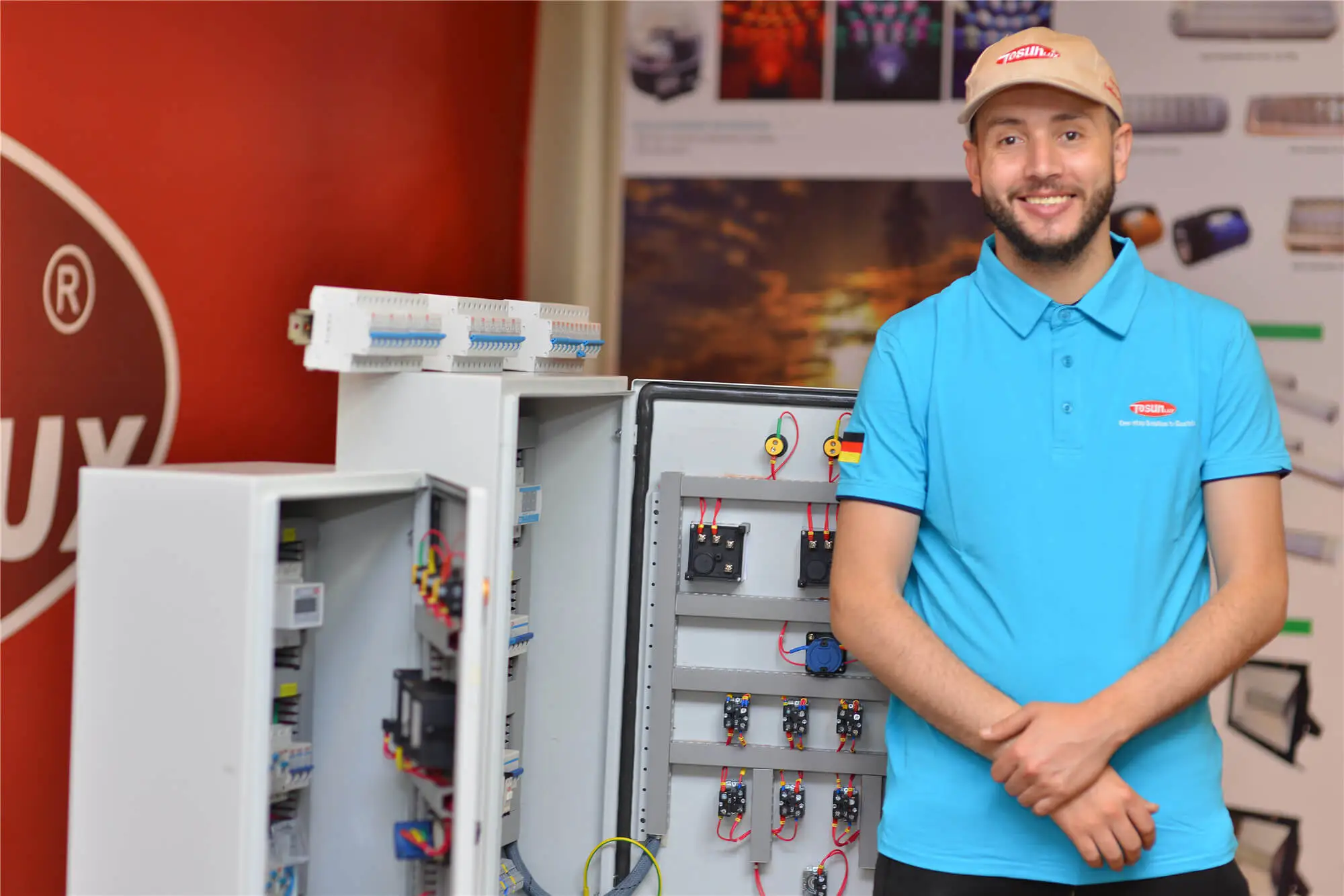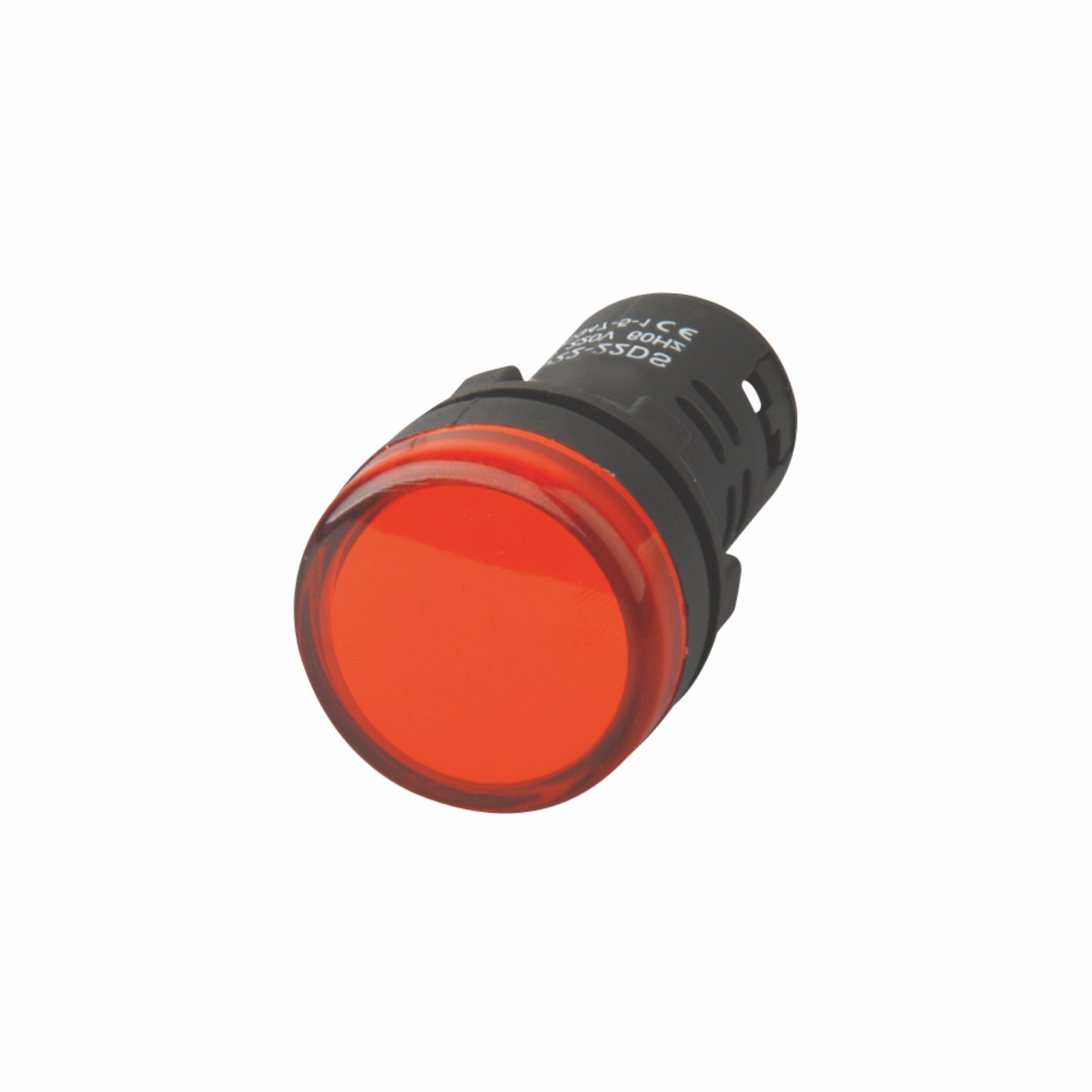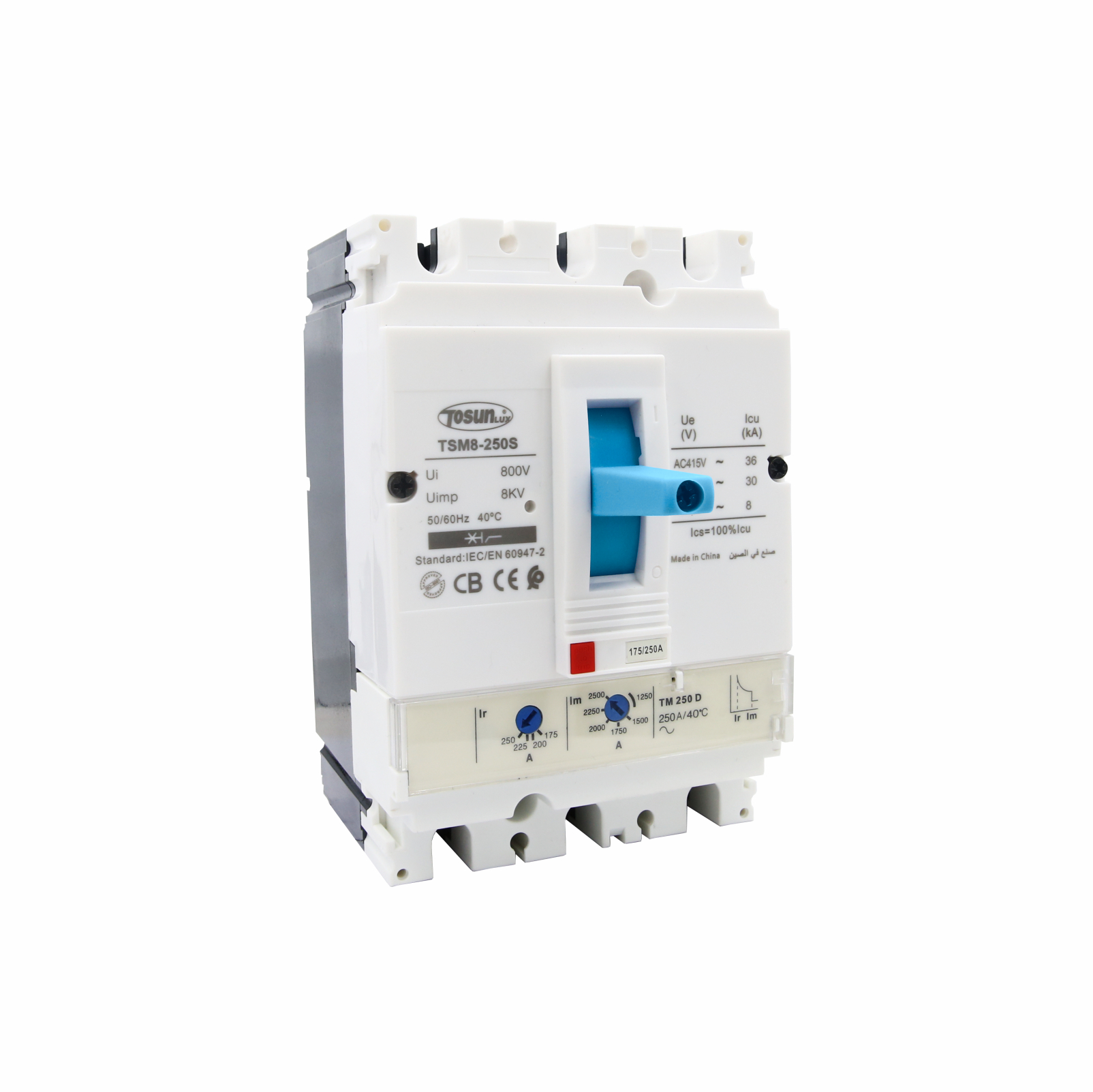
TOSUNlux AC Contactor
The TSC-D series AC unit contactor is highly versatile and designed for circuits with up to 660V AC and a rated current of 95A. It is ideal for controlling AC motors, offering features like delay timing, mechanical interlocking, and star-delta starting when combined with auxiliary contact blocks and interlocking devices. Compliant with IEC60947-4 standards and has obtained INTERTEK certification.
The TSC-D series boasts a rated working current ranging from 9A to 95A for AC3 and 3.5A to 44A for AC4. Its electrical life ranges from 100×104 to 20×104, and the mechanical life varies from 600×104 to 1000×104, depending on the model.
TOSUNlux AC Contrator
TOSUNlux offers a collection of 3 pole, 2 pole single pole AC UNIT CONTACTOR to meet your needs for safe and reliable solutions.

TSC1-D
660V AC 50Hz or 60Hz, rated current up to 620A

TSA1-DN
Strong compatibility: can be used with multiple models of AC Contactor
Why Choose Us?
There are several reasons to choose TOSUNlux AC contactor for your electrical needs:
Quality and Compliance:
TOSUNlux AC contactors comply with IEC60947-4 standards, ensuring that they meet international quality and safety requirements.
High Reliability
TOSUNlux AC contactors are designed to provide high reliability, with a long electrical life of 100×104 for AC3 and 20×104 for AC4, and a mechanical life ranging from 600×104 to 1000×104 , depending on the model.
Ease of Installation
Modular contactors, like those produced by TOSUNlux, are known for being easy to install, making them a convenient choice for various applications.
Since 1994
As a trusted brand in power distribution for over 30 years, TOSUNlux showcases its expertise and commitment to the industry. With a profound understanding of customer needs, we offer innovative products and solutions that address the evolving demands of the market.
Perfect dealer system
Our efficient dealer system at TOSUNlux fosters close collaboration with distributors, ensuring exceptional customer service and support. By working closely with our partners, we establish strong relationships that facilitate seamless product delivery to our valued customers.
Customer Support
TOSUNlux provides customer support through Wenzhou Tosun Electric Co., Ltd, making it easy to get assistance or make inquiries about our products.

About TOSUNlux
TOSUNlux: The Leading Manufacturer and Supplier of AC Contactors and Other Electrical Products
TOSUNlux offers a wide range of high-quality and low-cost solutions for various electrical applications, such as AC motor control, circuit protection, power distribution, lighting control, etc.
Quality and Certification










We’re Here To
All Your Questions
Here are some frequently asked questions about AC Contactor:
Are there any safety precautions to keep in mind when resetting the TOSUNlux AC contactor
To ensure a safe reset of the TOSUNlux AC contactor, please keep the following precautions in mind:
1. Before resetting, always switch off the power supply to the contactor to prevent electrical shock.
2. Allow the contactor to cool down for a few minutes before attempting to touch or reset it to avoid burns or injury.
3. Wear appropriate personal protective equipment, such as gloves and safety glasses, to protect yourself from potential hazards.
4. Inspect the contactor for any visible damage or defects before resetting it. If you notice any issues, contact a professional electrician for assistance.
5. If available, follow the manufacturer’s instructions and guidelines for resetting the contactor to ensure proper handling and functionality.
6. Remember, if you are not a qualified electrician, it is recommended to seek professional help for resetting the contactor. Amateur attempts can jeopardize safety and the proper functioning of the electrical system.
Always prioritize safety when dealing with electrical components, as mishandling can be dangerous and potentially fatal.
What is ac contactor?
An AC contactor is an electrical device that manages the flow of electricity within an AC circuit. Its primary function is to control AC motors by allowing for the making, breaking, frequent starting, and overall management of the motor’s power supply. AC contactors are suited for circuits with a maximum voltage rating of 660V AC at either 50Hz or 60Hz, with the maximum rated current varying between models, typically ranging from 620A to 95A. They find common applications in power distribution and various power systems. AC contactors come in two variations: AC contactors for AC voltage and DC contactors for DC voltage. They serve as control mechanisms for motors and electric loads, providing protection through low voltage releases in addition to enabling circuit on/off functionality.
How to test the contactor on ac unit?
To test the contactor on an AC unit, please keep in mind these general steps:
1. Begin by turning off the power supply to the AC unit to prevent any electrical hazards.
2. Locate the contactor, usually found on the side of the condenser unit. It may be necessary to unscrew the contactor while keeping it connected to the wires.
3. Disconnect the wires from the contactor, ensuring you remember their original placements.
4. Use a multimeter set to measure electrical resistance. Test the contactor’s operation by supplying power to the 24-volt coil with a 24-volt transformer (or power a 120v coil with 120 volts) and observe if the contacts close.
5. With the multimeter’s test probes, connect one probe to each of the contactor’s points. Before applying power to the coil, the multimeter should display “OL” or infinite resistance, indicating an open circuit. After powering the coil, the multimeter should display a reading of 0.0 Ohms, indicating the contacts have closed and are now connected.
6. Inspect the contactor for any visible damage or defects, such as burned contacts or loose connections.
7. If there are no visible defects and the contactor functions correctly in the test, reattach the wires to their original positions on the contactor.
8. Restore the power supply to the AC unit and perform a thorough test to ensure proper functionality.
It is crucial to note that testing an AC contactor should only be carried out by a qualified electrician to ensure both safety and the proper operation of the electrical system.
One-Stop Solution To Electric
Explore our more product categories
Get a quote now!
Contact TOSUNlux for More Information and Support on TOSUNlux AC CONTACTOR
application
Application
The TSC-D series AC contactor is designed for use in circuits up to 660V AC at 50Hz or 60Hz, with a maximum current of 95A. It is commonly utilized for controlling, starting, and managing AC motors. Applications of the TSC-D series AC contactor include:
Controlling the compressor and fan motors in heating, ventilation, and air conditioning systems.
Controlling the motors that drive conveyor belts, pumps, and other equipment in various industries.
Switching large loads on and off in lighting control systems.
Controlling the flow of electricity to different parts of the system.
More Reliable Solution To Electric
TOSUNlux has its own design team with a 5-people in-house design team, which provides 4-5 new series of products every year for our clients.

The Complete Guide to AC Contactors
Introduction
AC contactors are invaluable components of electrical systems, providing reliable control and protection for circuits. Understanding their importance and differentiating them from relays is crucial when selecting the right AC contactor. This comprehensive guide delves into the significance of AC contactors in electrical systems, explores their working principle, highlights compliance with safety standards and certifications, factors in expected switching frequency and lifespan, and incorporates authoritative data to enhance credibility.
1. The Importance of AC Contactors in Electrical Systems:
AC contactors serve as robust switches, facilitating the smooth flow of electrical currents. They are crucial for controlling motors, lighting systems, and protecting electrical equipment from overloads and faults. Reliable contactor selection is vital for ensuring optimal system performance.
2. Differentiating Between Relays and Contactors:
While both relays and contactors function as switches, contactors are specifically designed for high-current applications. Contactors offer enhanced durability and load-bearing capacities, making them suitable for controlling larger electrical devices and systems.
3. Compliance with Safety Standards and Certifications:
When selecting an AC contactor, it is essential to prioritize compliance with internationally recognized safety standards and certifications. Adhering to standards set by reputable organizations such as UL (Underwriters Laboratories), CSA (Canadian Standards Association), and IEC (International Electrotechnical Commission) guarantees that the chosen contactor meets rigorous safety and performance criteria.
4. Considering Expected Switching Frequency and Lifespan:
Different applications require contactors capable of handling varying switching frequencies. Failure to account for the expected number of switching cycles can lead to premature wear and unreliable operation. Manufacturers provide valuable information regarding an AC contactor’s expected lifespan, enabling informed decisions.
5. Understanding the Working Principle of AC Contactors:
AC contactors function through the interplay of an electromagnet, a movable armature, and stationary contacts. The energized coil generates a magnetic field that attracts the armature, causing the contacts to close and allowing current flow. When the coil is de-energized, the armature returns to its original position, opening the contacts and interrupting the current.
6. Data-driven Decision-Making:
To enhance the credibility of the guide, let’s incorporate authoritative data at relevant junctures. For instance, citing research demonstrating the correlation between compliance with safety standards and improved system reliability or referencing studies showcasing the importance of selecting contactors with adequate switching capacity for specific applications can significantly bolster the guide’s authority.
Conclusion:
Choosing the correct AC contactor is crucial for the efficient and safe operation of electrical systems. By comprehending the significance of AC contactors, distinguishing them from relays, prioritizing compliance with safety standards and certifications, considering expected switching frequency and lifespan, and embracing data-driven decision-making, you can confidently select an AC contactor that optimally suits your specific electrical system requirements.
One reputable brand that stands out in the field of AC contactors is TOSUNlux. Known for its commitment to quality, reliability, and innovation, TOSUNlux offers a wide range of AC contactors that meet international standards and certifications. Their products are designed to withstand demanding applications and provide reliable performance in diverse electrical systems.
For further reading and exploration, we recommend the following articles:
Share this Blog
 : +86-139 0587 7291
: +86-139 0587 7291 English
English Español
Español Русский
Русский Français
Français العربية
العربية Português do Brasil
Português do Brasil Українська
Українська Türkçe
Türkçe Polski
Polski Nederlands
Nederlands Italiano
Italiano Bahasa Indonesia
Bahasa Indonesia हिन्दी
हिन्दी اردو
اردو አማርኛ
አማርኛ Հայերեն
Հայերեն ไทย
ไทย Монгол
Монгол فارسی
فارسی Shqip
Shqip Ελληνικά
Ελληνικά










